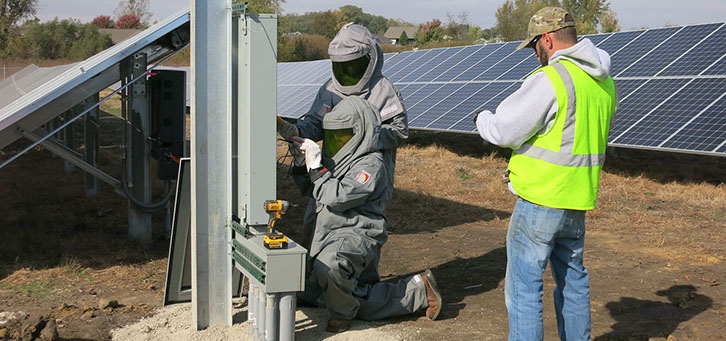
This is the second installment in a short collection of buying affordable solar energy; and still getting quality, safety, and performance. This one is about a common benchmark used across the industry – dollars per kilowatt – and some things that make it go up or down that also affect the safety, performance, and aesthetics.
First, a quick refresher: power is like the speedometer of the car and energy is like the odometer. In this case, we measure power in Watts or kilowatts, “kW”. And energy in kilowatt-hours, “kWh”. The difference is adding time to the calculation.
The unit cost per power rating, dollars per kilowatt, $/kW, makes it easy for solar experts to compare similar equipment or labor tasks. The $/kW is very common, in that it mostly means more solar panels for the same investment. But as a project financial metric, particularly for an owner or buyer, it is like buying a car based on dollars per pound. Weight isn’t why you buy a car, and power rating isn’t why you buy solar.
Isn’t the goal really to produce energy? Energy is what keeps the lights on, powers your machinery and computers.
What makes the difference in reducing your expenses and everything else good about solar is the cost of energy, in dollars-per-kilowatt-hour (that’s “$/kWh”). You pay the utility for energy in kWh, right? And isn’t it the same thing for an electric system that burns diesel to make electricity; gallons per kWh?
Ok, so once we agree we really want to make and buy energy, then we have to decide on how that is calculated and measured. Because while $/kWh is a much better metric, it isn’t as simple as $/kW to figure out.
A good way to figure $/kWh is to divide the life-cycle cost by the life-cycle energy, and that’s pretty easy to do. The life-cycle cost is the first cost plus annual recurring cost and equipment replacements in different years. The energy estimate usually will come from a computer simulation, using a program like “PVSyst”. This package takes the actual engineering information about the array and calculates the energy production day by day through the year. The PVSyst model is a worldwide bankable model, and every solar engineer should know how to use it to calculate accurate results.
Then the $/kWh is calculated as the lifetime cost divided by lifetime energy. Usually that is the discounted time-value of cost and energy, but that’s a minor detail. The time-value calculation accounts for lifecycle cost for inverters, for instance.
Then there are other things that will affect the cost that you should keep in mind. Let’s look at these in $/kW, because this metric is good at comparing options that are alike in every way except one. We will start by defining a typical $/kW for a commercial solar project – let’s assume $2,000/ kW for the sake of discussion.
- Safety. Do you want to make sure the installation team follows safety laws? Fall protection probably costs about $2 to $3 per kW.
- Safety, again. If you live in a high-wind area, like the Caribbean, you probably want to make sure that a hurricane doesn’t blow away your solar system. This is a simple engineering task, and it will cost you $2 to $3 per kW, depending on the wind rating and site conditions. Ask us about how we do this, and we can tell you about the arrays that our team built in the Caribbean that survived the 2017 hurricane season (Irma and Maria).
- Quality Assurance is a valuable investment. The includes insurance, training, certification, and the depth of bench to make sure engineering and project management are done right. There are plenty of “two-men-and-a-truck” in every solar marketplace, and you usually get what you pay for.
- What happens if there is a big storm or a fire or other casualty that damages the project while it is being installed? Builder’s Risk insurance covers that, and it is the contractor’s responsibility for the contractor’s risk. Do you as an owner want your solar contractor to buy a Builder’s Risk policy for your project, even though it is the contractor’s risk? Because when you think about it, who really is at risk?
It is fairly easy to get a solar-energy system designed and installed and help your business start performing better. But not all solar-energy systems are equal. A savvy Owner needs to ask the right questions to get the best value – that really delivers on the Owner’s goals. Asking for a strong Quality Assurance / Quality Control plan, and cost metrics focused on energy, not power, are good places to start.
